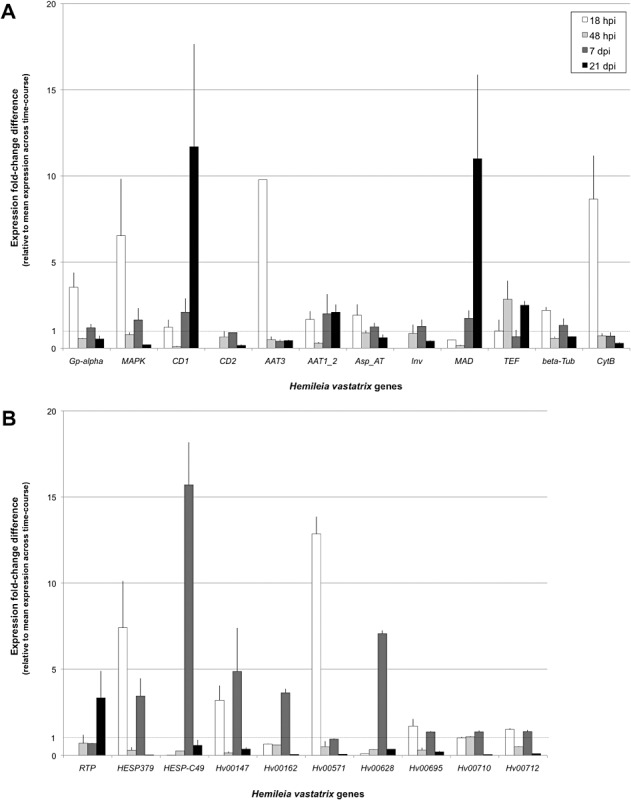Figure 5.

Expression profiles for 22 Hemileia vastatrix transcripts during the time course of infection of Coffea arabica var. H147/1 leaves by H. vastatrix strain 178a at 18 and 48 h post‐inoculation (hpi) and 7 and 21 days post‐inoculation (dpi). (A) Hemileia vastatrix genes with known homology in databases and encoding an heterotrimeric G‐protein α subunit (Gp‐alpha), a mitogen‐activated protein kinase (MAPK), two chitin deacetylases (CD1 and CD2), two amino acid transporters (AAT1_2 and AAT3), an aspartate amino‐transferase (Asp_AT), an invertase (Inv), a mannitol dehydrogenase (MAD), a translation elongation factor (TEF), a β‐tubulin (beta‐Tub) and a cytochrome B (CytB). (B) Ten H. vastatrix genes of no known function and showing homology to known rust effectors (rust transferred protein RTP; haustorially expressed secreted proteins HESP379 and HESP‐C49), or showing no homology in international databases and representing new rust genes (Hv00147, Hv00162, Hv00571, Hv00628, Hv00695, Hv00710, Hv00712). Transcript levels were assessed by quantitative reverse transcription‐polymerase chain reaction (RT‐qPCR) using three H. vastatrix reference genes (cytochrome oxidase subunit III, contig19515; ribosomal protein 40S, contig01333; hypothetical protein Hv00099, contig21737) and, for each gene, fold‐change differences correspond to the expression level measured at a given time point relative to the mean level calculated across the time course (note the one‐fold line indicated). Data were obtained from two independent time‐course replicates.
